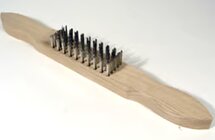Has anyone tried buffing with bees wax? No other finish, just wax on the sanded wood? Worth it?
Worth it? Maybe depends on the goal and look wanted.
I use beeswax at times (I have a LOT from my beehives) and it might be a little too soft for power buffing with a wheel. However, I do rub it on by hand, often onto Eastern Red Cedar.
I do this one of two ways:
- Apply beeswax directly to the wood then vigorously rub it in (buff?) with a soft cloth. Leaves a nice soft finish, light in color. In our house we've been using a piece finished like this since 2014.
- Apply beeswax the same way but then heat with a mini heat gun to melt the wax and draw it into the wood grain, rubbing again with a cloth, reapplying and remelting several times. They buff with a soft cloth. This creates an entirely different look, much darker.
The piece from cedar, beeswax applied by hand, no heat. (This was a wild idea experiment, turned out to be the "prototype" for this design, since repeated many times (by me and others) Looks like I didn't get the radius perfect on one side! These make great wedding gifts and housewarming gifts.
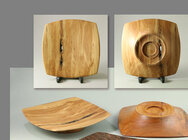
This is with beeswax applied to ERC and melted with the heat gun. More added until the wood was saturated. Variation on the design above.
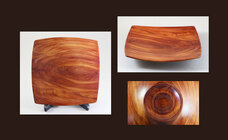
This is the second bowl I ever made (almost 25 years ago), beeswax applied by hand then rubbed into the surface of the ERC with a soft cloth with the lathe spinning. This created a little heat, not as much as with the heat gun. I like the soft sheen look.
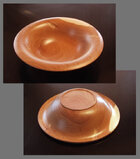
And this lid has beeswax melted into the wood.
May be of interest to some: I bought the glass container with a glass lid from Ikea. I turned a lid from cedar and reused the silicone rubber seal that came on the glass lid. We use this in the kitchen when we want a pinch of salt.
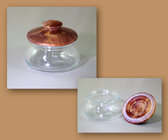
Note that although I do love beeswax on wood, it's not a particularly durable finish. Probably not good for something you want to wash, although wiping with a damp cloth is fine. Easy to renew if needed.
This is the type of heat gun I use, but not where I bought it:
JKJ

